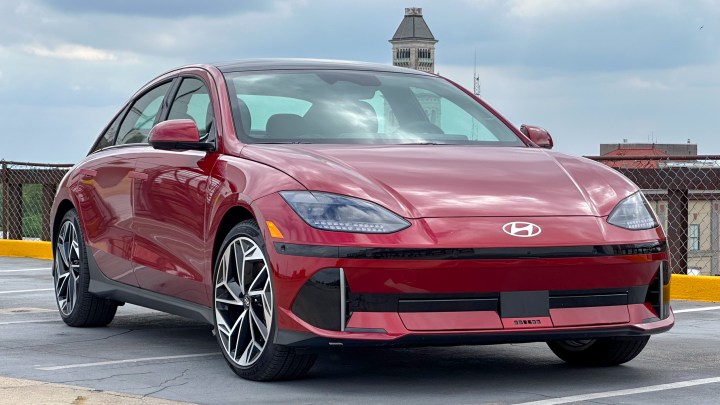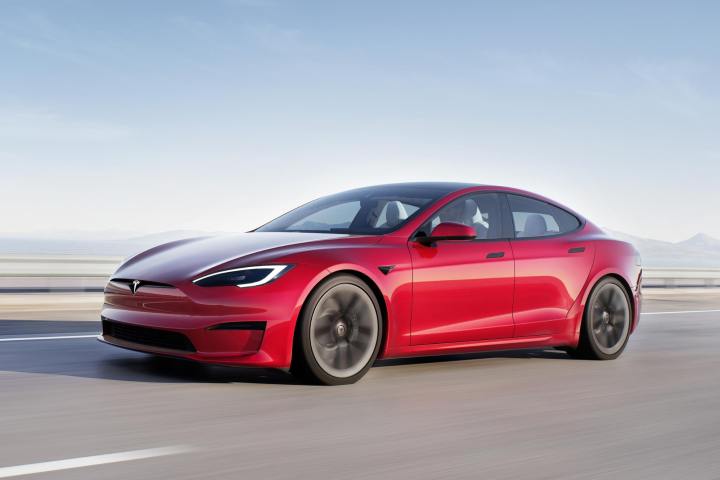The electric vehicle space is changing, and quick. While only a few months ago the majority of EV makers used the J1772 connector for Level 2 charging, and the CCS connector for DC fast charging, in a few years that may be completely different. Why? Many of the top carmakers have announced the switch to the North American Charging Standard, or NACS — also known best as “the Tesla plug.”
Curious about what this means for you? Here’s everything you need to know.
What is the NACS
The NACS is a charging standard for a connector that was created by Tesla and first used on Tesla cars in 2012. The standard is also used on all Tesla charging stations, allowing Tesla drivers to charge their cars at Superchargers, Destination Chargers, and using the Tesla Wall Connector. Tesla announced that it was opening the standard up to other carmakers.
Which cars currently use the NACS connector?
Currently, all Tesla cars make use of the NACS connector, allowing Tesla drivers to charge their cars at any Tesla-branded charging station, or other charging stations with the use of an adapter.

More cars, however, are set to adopt the standard in the near future. Ford, GM, and Rivian have all announced that they’re going to adopt the NACS connector for future cars, with the first non-Tesla EVs that make use of the connector likely to roll out at the end of 2024 or the beginning of 2025. It’s likely that more carmakers will announce their own adoption of the NACS, and if the likes of Hyundai and Kia announce adoption, it’ll make the NACS the main standard in the U.S.
What charging networks currently use the NACS connector?
Currently, only Tesla charging stations offer NACS. Some Superchargers allow non-Teslas to charge, but they still require an adapter. EV drivers with an adapter can, however, charge at Tesla Destination Chargers or using a Tesla Wall Connector charger.
It’s likely that as more carmakers adopt the NACS connector, more charging networks will too. Charging networks like Electrify America, ChargePoint, and more, will want to support the connectors that customers use, and while none of them have announced a switch just yet, charging equipment maker SK Signet, which makes equipment for the likes of Electrify America, has announced that it’ll support the NACS.
What existing EV owners need to know
So how will the move impact existing EV owners? It depends on which car you own. If you own a Tesla, in all likelihood, things are only going to get easier for you. When charging networks start to adopt the NACS, you’ll likely be able to charge at many more locations across the country.

If you own a non-Tesla, with a CCS port, for example, your experience is unlikely to change much in the near term. If third-party charging networks adopt Tesla’s standard, it will likely be a while before they start moving over their connectors. When they do, it’s likely they’ll do so in phases — offering some stations with the NACS connector, and others with the CCS connector.
After some time, you may start finding yourself in situations where an adapter may come in handy — allowing you to still charge at stations with the NACS connector. Some stations may provide this adapter, while at others, you’ll need to provide your own.
Buying a new car?
If you are buying a new EV, you’re doing so at a bit of an awkward time. As North America transitions to the NACS connector, finding CCS charging ports could be increasingly difficult. But, it will be at least a year or so before non-Tesla EV manufacturers build NACS connectors into their cars, meaning that eventually you’ll be stuck with a car that has an outdated connector.

Of course, it’s important to put that into perspective a little. It will be at least a few years before it’ll start to get harder to find charging stations with CCS connectors, and even then you’ll be able to charge with an adapter. For some, it may be worth waiting a little longer to buy an electric car or buying a Tesla to ensure you have a car with what is seemingly the charging connector to win out in the U.S.
For most buyers, however, having to use a connector at some point in a few years to charge probably won’t be all that big of a deal — especially for those who mostly charge at home and can have a home charger with CCS, or an adapter permanently attached to their charger.
Is this an improvement?
It may take some time, but having a unifying, single charging standard in the U.S. should hopefully make finding and using electric car chargers a whole lot easier. There is still some question as to how easy it will be for cars with the NACS connector to charge at all stations, though. For example, right now, Tesla drivers can plug in at a Tesla Supercharger and have their car automatically charge, paying for the session automatically through the card attached to their account. Hopefully, charging at all NACS-compatible stations will be that easy — but it’s doubtful.
All that said, using one single connector should make for a better experience. Hopefully, the rest of the issues involved with making charging an EV easier will get worked out too though.
Editors' Recommendations
- Tesla to begin production on new, more affordable models
- Tech giant reveals nice price for new EV to take on Tesla
- Here’s how Ford will give EV customers Tesla Supercharger access
- Tesla video shows off Cybertruck’s Basecamp tent attachment
- Ford and GM EV drivers will be able to charge at Tesla Superchargers in February


